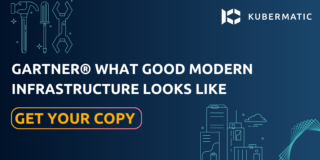In 2024, the cybersecurity landscape has seen significant increases in threats and vulnerabilities. According to the CrowdStrike Global Threat Report, there was a 75% increase in cloud intrusions, highlighting the growing challenge of securing cloud environments. Adversaries are using sophisticated techniques, such as abusing valid credentials and leveraging generative AI for more effective phishing and social engineering attacks (CrowdStrike)
The Deloitte Cybersecurity Threat Trends Report also underscores the rise in threats, noting a 400% increase in IoT malware attacks, with ransomware affecting 66% of organizations in 2023. These figures illustrate the escalating complexity and frequency of cyber threats (Deloitte United States).
Additionally, the SonicWall Cyber Threat Report recorded a staggering 659% increase in cryptojacking attacks in 2023, driven by the exploitation of cryptocurrency mining through unauthorized use of victims’ hardware (SonicWall).
In an era where cybersecurity threats are continually evolving and increasing, the NIS 2 Directive marks a significant step forward in enhancing the resilience of essential services and digital infrastructure across Europe and regulations that will affect every business. To effectively navigate the complex regulatory landscape, it’s crucial to understand the implications of the NIS 2 Directive on your IT infrastructure and processes. As well as, ensuring you collaborate with leading technology providers, like Kubermatic, who are addressing these new requirements as part of their platform development.
But, What is the NIS 2 Directive?
As an update to the original Network and Information Security Directive, the NIS 2 Directive aims to bolster the cybersecurity of essential services, digital service providers, and critical infrastructure within the EU. This directive mandates stricter security measures, improved incident reporting, and more robust risk management practices. Its goal is to ensure a higher level of protection against cyber threats and enhance the overall resilience of the EU’s digital landscape.
What are the Key Requirements of NIS 2
- Enhanced Cybersecurity Measures: Organizations must implement comprehensive security measures, including risk management, incident response, and business continuity planning.
- Improved Incident Reporting: Companies are required to report significant incidents to the relevant authorities within 24 hours, ensuring a timely and coordinated response.
- Stricter Compliance and Penalties: Non-compliance with NIS 2 can result in substantial fines and sanctions, emphasizing the importance of adhering to the directive.
How is Kubermatic Addressing NIS 2?
Kubermatic is dedicated to staying ahead in helping organizations meet the stringent requirements of the NIS 2 Directive. We ensure compliance and enhance cybersecurity by:
1. Building a Robust and Comprehensive Security Framework
Kubermatic security framework aligns with the NIS 2 Directive’s requirements and includes advanced security features such as:
- Automated Security Policies: Kubermatic enables the automatic enforcement of security policies across all Kubernetes clusters, ensuring consistent and comprehensive protection.
- Regular Security Audits: Regular audits and vulnerability assessments are conducted to identify and mitigate potential security risks proactively.
2. Enhanced Incident Response
Kubermatic’s platform is designed to streamline incident response processes, ensuring that organizations can quickly detect, report, and respond to security incidents. Key features include:
- Real-Time Monitoring and Alerts: Continuous monitoring of all Kubernetes clusters with real-time alerts for any suspicious activities or potential threats.
- Integrated Incident Management: Seamless integration with incident management systems to facilitate rapid and coordinated responses to security incidents.
3. Risk Management and Compliance
To help organizations manage risks and ensure compliance with NIS 2, Kubermatic offers:
- Risk Assessment Tools: Comprehensive tools for assessing and managing risks across all Kubernetes environments.
- Compliance Reporting: Automated compliance reporting capabilities that simplify the process of demonstrating adherence to NIS 2 requirements.
Case Study: Kubermatic in Action with NIS 2 and Kubernetes
A leading European financial services provider leveraged Kubermatic’s Kubernetes Platform to enhance their cybersecurity posture and ensure compliance with the NIS 2 Directive. By adopting Kubermatic’s automated security policies and real-time monitoring capabilities, the provider was able to:
- Reduce the time to detect and respond to security incidents by 50%.
- Achieve full compliance with NIS 2 requirements ahead of schedule.
- Enhance overall security resilience, mitigating the risk of significant cyber threats.
Conclusion
The NIS 2 Directive represents a pivotal moment in the evolution of cybersecurity standards within the EU. By partnering with technology leaders like Kubermatic, organizations can navigate this complex regulatory landscape with confidence. Kubermatic’s comprehensive security framework, enhanced incident response capabilities, and robust risk management tools ensure that businesses not only comply with NIS 2 but also strengthen their overall cybersecurity posture.
As the digital threat landscape continues to evolve, staying ahead of regulatory requirements and adopting best-in-class security practices is essential. With Kubermatic, organizations are well-equipped to meet the challenges of the NIS 2 Directive and safeguard their digital infrastructure against the ever-present threat of cyberattacks.






